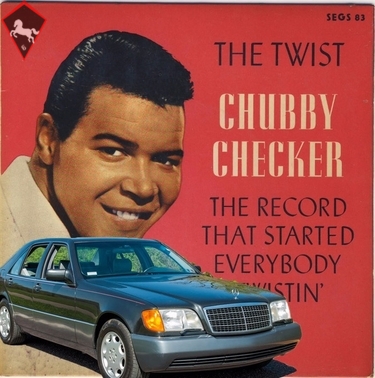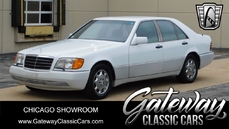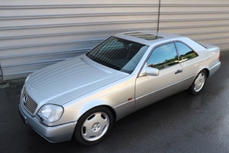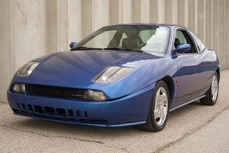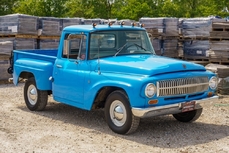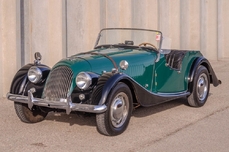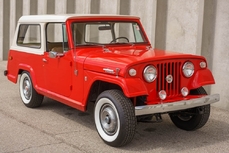Mercedes-Benz w140 V8 1992
General description :
1992 Mercedes-Benz 400SE Sedan
Owned by Motown singer Chubby Checker from 1992 till 2015 (23 years of ownership!)
Black Pearl Metallic (code DB-199) over gray exterior
Gray leather interior (code 268A)
4.2L, 32v V-8 engine (M119)
4G-Tronic four-speed automatic transmission
1st title shows Ernest Evans aka Chubby Checker
Documentation includes copy of clean Carfax report, original owners manual, car care guide, maintenance book, airbag guide, dealer directory, theft-deterrent radio instruction book, original lease agreement and title issued to Chubby in 1995, after the lease ended. There are also copies of Checker’s music memorabilia, including a box of his 45 records
In a twist of luck, MotoeXotica Classic Cars has acquired the car leased then owned by Ernest Evans, aka Chubby Checker, a 1992 Mercedes-Benz 400SE Sedan. This example was made in October 1991 in Stuttgart, Germany and was in Mr. Chubby Checkers ownership for 23 years (1992-2015).
The singer responsible for singing The Twist, Lets Twist Again and backup vocals on The Fat Boys cover of The Twist and many more songs, Checker leased this Benz for three years, beginning June 1, 1992. After the lease ended, on May 20, 1995, he owned the car for 20 more years, trading it in for a new Mercedes at the same dealership that maintained this car.
Finished in Black Pearl Metallic (code DB-199) over gray on the outside, the paint and trim are in near-excellent condition. The windows are clear and crack-free and in overall very good order. Interestingly, the rear window has no rear defroster grid. The cars lights are intact and crack-free and even sport washers and wiper blades. This Benz rolls on Michelin Primacy MXV4 radials, size 235/60R16 at all four corners, surrounding factory wheel covers. Both wheels and tires appear in good order. All of this Benzs body panels are straight and solid. The engine bay is very tidy and the bumpers fit tight and look great.
Under the hood with the three-pointed star ornament is a 4.2L, 32-valve V-8 engine (M119) mated to a 4G-Tronic four-speed transmission. The M119 engine differed from theM117motor in the following ways:
The engine block used asbestos-free gaskets and has better oil flow
The cylinder head was now afour-valvealuminum unit withdual overhead camshafts
The connecting rods were forged and enable cooling of the pistons with sprayed oil
The pistons were iron-coated cast aluminum
An improved vibration damper system was used
The aluminum oil pan had bolted-on oil baffles to prevent foaming of the engine oil
The intake camshaft timing was adjustedhydro-mechanicallyup to 20 degrees:
02000rpm retarded for improved idle and cylinder scavenging
20004700rpm advanced for increasedtorque
4700rpm retarded for improvedvolumetric efficiency
TheMercedes-Benz 4G-Tronic transmissionwas a hydraulically operated non-lockup four-speed automatic and was calibrated to take off in second gear to reduce “creeping” and provide a smoother ride. The transmission will select 1st gear only if the selector is in “2” or in case of abrupt acceleration. Other attributes of this transmission include a 2-3 shift delay when the engine is cold in order to speed up catalyst warm-up. Fourth gear is a 1:1 ratio, meaning that cruising at about 62mph generates engine speeds around 3000 rpm.
Inside, the gray leather front bucket seats are in near-excellent shape. The matching gray carpet is in very good order, as is the complementing headliner. The two-tone gray instrument panel, with its burled wood accents, looks fantastic and the factory, four-spoke steering wheel with its thick rim looks new. The inner door panels, mirror glass, center console and shift lever are all in very good shape. Even the rear seat passengers have their own air vents, however, the speedometer and odometer are inoperable and the factory radio is locked.
TheMercedes-Benz W140was a series of flagship vehicles that were manufactured by the German automotive companyMercedes-Benz. On November 16, 1990, Mercedes-Benz unveiled the W140 S-Class via press release, later appearing in several February and March editions of magazines.The W140 made its public debut at theGeneva Motor Showin March 1991, with the first examples rolling off the production line in April 1991 and North American examples on August 6, 1991.
The W140 introduced innovations such asdouble-pane window glazing, power-assisted closing for doors and trunk lid,electric windowswhich lowered back down upon encountering an obstruction, rear-parking markers which rose from the rear wings (discontinued on later vehicles, and replaced with sonar-assisted parking) and a heating system which, if desired, continued to emit warm air after the engine was turned off. For details like this, the W140 is often known as the last Mercedes to be “over-engineered.”
The W140 used a rearhydropneumatic suspension, first introduced on the W116 450 SEL 6.9 (introduced in 1975) to be used on the S 500 and S 600 models.
Documentation includes copy of clean Carfax report, original owners manual, car care guide, maintenance book, airbag guide, dealer directory, theft-deterrent radio instruction book, original lease agreement and title issued to Chubby in 1995, after the lease ended. There are also copies of Checker’s music memorabilia, including a box of his 45 records.
Competition to this Mercedes-Benz in 1992 included Acuras Legend, Audis Quattro 4.2 V-8, BMWs 750iL, Bentleys Turbo R, Infinitis Q45, Jaguars Sovereign and Lexus LS400.
The late Dick Clark once said, The three most important things that ever happened in the music industry are Elvis Presley, the Beatles and Chubby Checker.
This car is currently located at our facility in St. Louis, Missouri. Current mileage on the odometer shows 197,600 miles. It is sold as is, where is, on a clean and clear, mileage exempt title. GET OUT AND DRIVE!!!
CLICK HERE TO VIEW OUR YOUTUBE VIDEO!
VIN: WDBGA42E9NA034952 EIN: 119971 12 003890 TIN: 722366 03 629915
https://www.motoexotica.com/inventory/listing/1992-mercedes-benz-400se-sedan/
1992 Mercedes-Benz w140 V8 is listed sold on ClassicDigest in Fenton (St. Louis) by for $18500.
Car Facts
Car type : Car Make : Mercedes-Benz Model : w140 Model Version : V8 Engine size : 0.0 Model Year : 1992 Sub type : Sedan Location : Fenton (St. Louis)
Sold
Seller Information
Sold
People who viewed this Mercedes-Benz w140 also viewed similar Mercedes-Benz listed at ClassicDigest
Other cars listed for sale by this dealer
About Mercedes-Benz
In the annals of automotive history, the journey of Mercedes-Benz is a tale that unfolds with the ingenuity of its founding pioneers. In the year 1886, Karl Benz crafted the Benz Patent Motorwagen, a creation that would go down in history as the world's inaugural automobile. Unbeknownst to him, this moment marked the genesis of what would evolve into the most illustrious premium car manufacturer globally. The financial underpinning of this pioneering venture, interestingly, was provided by Karl Benz's wife, Bertha Benz, demonstrating a remarkable partnership that would set the tone for Mercedes-Benz's legacy.A parallel narrative emerged not far away, as Daimler-Motoren-Gesellschaft, founded by Gottlieb Daimler and Wilhelm Maybach, entered the scene. In 1901, they unveiled their automobile under the now-famous moniker "Mercedes," meaning "godsend" in Spanish. This name was bestowed upon the car at the behest of Emil Jellinek's daughter, the distributor for Daimler-Motoren-Gesellschaft. The wheels of innovation were set in motion.
Fast forward to 1926, a pivotal year that witnessed the merger of Daimler with Benz & Cie., culminating in the birth of Daimler-Benz. The amalgamation saw the adoption of "Mercedes-Benz" as the distinguished trademark for their automobiles, fusing the legacies of two visionary entities into one.
Contrary to perceptions of conservatism, the trajectory of Daimler-Benz unfolds as a chronicle of industry firsts. From the introduction of the honeycomb radiator to the float carburetor, and the pioneering implementation of four-wheel brakes in 1924, Daimler-Benz consistently pushed the boundaries of automotive innovation. The diesel-powered Mercedes-Benz 260 D in 1936 marked the inception of diesel engines in passenger cars. The iconic Mercedes-Benz 300SL Gullwing made history as the first car with direct fuel injection, albeit the Gutbrod's tiny 2-stroke engine can claim precedence.
Safety innovations became a hallmark, with Béla Barényi's patented safety cell design in the "Ponton"-models in 1951, featuring front and rear crumple zones. The W116 450SEL 6.9 saw the introduction of the Anti-Lock Brake system (ABS), another pioneering safety feature. From the first production airbags and beyond, the legacy of "firsts" continued to be etched into the fabric of Daimler-Benz.
Over its centennial journey, Mercedes-Benz has not merely produced cars but has sculpted automotive icons. The SSKL, 710 SSK Trossi Roadster, 770K Grosser, 540K Spezial Roadster, 300SL Gullwing, w100 600 Pullman, w111 280SE 3.5 Flachkühler, w113 230SL Pagoda, w109 300 SEL 6.3, and w201 2.3-16 Cosworth stand testament to the brand's commitment to engineering excellence.
The roaring Silver Arrows, or "Silberpfeile," including the W 25, W 125, W154, W165, and W196, created a legacy of dominance on the racetrack. These machines were not merely cars; they were expressions of precision, speed, and an indomitable spirit that left their competitors in the dust.
As Mercedes-Benz marches into the future, it does so not just as an automaker but as a custodian of a legacy, a torchbearer of innovation, and a beacon of automotive excellence. The road ahead is sure to witness the continued fusion of cutting-edge technology, timeless design, and an unwavering commitment to setting new standards in the world of automobiles.
One luminary figure who left an indelible mark was Béla Barényi, often heralded as the "father of passive safety" for his pioneering work in safety engineering. His patented safety cell design, featuring front and rear crumple zones, became a hallmark of Mercedes-Benz's commitment to occupant safety, setting new standards that reverberated throughout the automotive world.
Moving through the chronicles, the collaborative genius of Wilhelm Maybach, alongside Gottlieb Daimler, laid the foundation for Daimler-Motoren-Gesellschaft. Their innovations not only birthed the first Mercedes but established a culture of relentless pursuit of technological excellence that remains integral to Mercedes-Benz's DNA.
In the post-merger era of 1926, Ferdinand Porsche emerged as a prominent figure within Mercedes-Benz. His work on the Mercedes-Benz S-Type, a supercharged race car, garnered acclaim and set the stage for a legacy that extended far beyond the marque. Porsche's impact would later extend to his eponymous company, but his influence at Mercedes-Benz during those formative years was pivotal.
As the 20th century progressed, the legendary Rudolf Uhlenhaut emerged as a key figure. Uhlenhaut, an accomplished engineer and the driving force behind the iconic Silver Arrows, played a crucial role in Mercedes-Benz's dominance in motorsports. His engineering prowess and attention to detail were instrumental in creating some of the most formidable racing cars of the era.
In the latter half of the century, figures like Bruno Sacco, the head of design at Mercedes-Benz from 1975 to 1999, left an indelible imprint on the brand's aesthetic identity. Sacco's design philosophy, characterized by clean lines and timeless elegance, shaped iconic models like the W126 S-Class and the W201 190E, solidifying Mercedes-Benz's reputation for luxury and sophistication.
The narrative would be incomplete without acknowledging the contributions of engineers like Hans Scherenberg, whose leadership in the 1970s ushered in a new era of technological innovation at Mercedes-Benz. Scherenberg's tenure saw the development of groundbreaking technologies, including the Anti-Lock Brake system (ABS) and the introduction of airbags in production cars.
